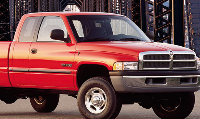expected gain??
#12
the H&S provide more lift.. so you get more charge into the cylinders- just like a cam.. it's better to do a cam, but a LOT more work.. If you're looking for a HUGE gain, you're not going to get it by increasing the rocker ratio.. you will get a little though.. I think folks have charts if you look hard enough showing 20HP gains by increasing the rockers.. that is a nice little bump for $350 and about an hours worth of work..
another place you get power from the rocker ROLLERS that is overlooked: less drag on the engine and less parasitic loss of power.. those pivot rockers resist the pushrods a LOT more than the roller bearings do, but they do the same thing.. It's my opinion that this is more the reason for gains than the paltry addition of lift- but I'm sure that is debatable.
another place you get power from the rocker ROLLERS that is overlooked: less drag on the engine and less parasitic loss of power.. those pivot rockers resist the pushrods a LOT more than the roller bearings do, but they do the same thing.. It's my opinion that this is more the reason for gains than the paltry addition of lift- but I'm sure that is debatable.
#13
It isn't 'just' about the lift though. It's "area under the curve". The valve spends more time at larger openings with the higher ratio rockers.
Cams are speced out in a couple different ways. Used to be, they would be rated by 'advertised lift/duration', which was rated from when the cam actually started to open the valve, to when the valve finally closed. Lift was exactly that, how far the valve opened. Then, along came the 'new' method of ratings..... Duration at .050 lift. (or greater) With the higher ratio rockers, you get more duration at .050 lift, and also the additional lift. So, by changing the rocker ratio, you get basically the same effect as installing a larger cam. But, a LOT less work.
You are indeed correct in your assessment that the (dramatically) reduced friction of the rollers does indeed free up a couple ponies.
I suspect that there is a bit of parasitic loss, due to the increase leverage of the higher rocker ratio though..... so, changing to a cam that would end up with the same specs as just doing rockers, and sticking to the stock ratio rockers (but, the roller version) would produce a bit more power than just increasing rocker ratio.. but, for the costs/work involved....... Rockers are pretty good bang for the buck.
Cams are speced out in a couple different ways. Used to be, they would be rated by 'advertised lift/duration', which was rated from when the cam actually started to open the valve, to when the valve finally closed. Lift was exactly that, how far the valve opened. Then, along came the 'new' method of ratings..... Duration at .050 lift. (or greater) With the higher ratio rockers, you get more duration at .050 lift, and also the additional lift. So, by changing the rocker ratio, you get basically the same effect as installing a larger cam. But, a LOT less work.
You are indeed correct in your assessment that the (dramatically) reduced friction of the rollers does indeed free up a couple ponies.

I suspect that there is a bit of parasitic loss, due to the increase leverage of the higher rocker ratio though..... so, changing to a cam that would end up with the same specs as just doing rockers, and sticking to the stock ratio rockers (but, the roller version) would produce a bit more power than just increasing rocker ratio.. but, for the costs/work involved....... Rockers are pretty good bang for the buck.
#17
#20



